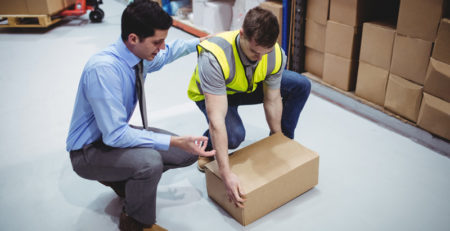Key Concepts and Topics in Manufacturing Stores Management
At its heart, professional stores management is about process and order and when done properly can make a significant impact on the financial performance in a manufacturing organisation.
With the right system in place, manufacturers can ensure that they maximise production whilst minimising stockholding and wastage. Utilising Just In Time (JIT) techniques coupled with professional stores management firms can see massive efficiency and productivity gains.
How should stores be organised for maximum efficiency?
Professionally managed Stores typically have a reliable process and space firstly to receive the incoming materials (Goods In), keep them for as long as they are not required for use (Custody) and then to move those items out of stores for use (Issue).
In a manufacturing organisation this process forms a constant cycle to maintain and run the activities of their Stores.
The basic responsibilities of stores are to act as custodian and controller for parts, supplies, and materials, and to provide a timely and efficient service for users of those goods.
Typically Stores have to follow certain activities as a formal process that are then managed through use of various resources and are therefore called Stores Management.
The task of storekeeping means safe stockholding and preservation of the materials stocked, including receipt, issue and accounting.
The objective is to efficiently provide the right materials at the right time in the condition required by the end user.
What is the role of a Stores Manager?
The basic role of a Stores Manager is to receive the goods and act as custodian of the materials and then to issue them as and when Production demands.
Any organisation has to spend money on space in which to store these items i.e.
So as a Stores manager you will typically be responsible for:
- Receiving of incoming materials (goods)
- Safe keeping of material (Custody)
- Disposal of obsolete or unwanted goods
- Inventory Management
- Housekeeping, Control and record maintenance
How should stores be organised?
Organisation starts with a suitable layout design of the stores, which will vary depending upon the nature of items, speed of use and size and location. For example, a process that requires use of raw materials, not inherently expensive as individual items (and therefore not worth stealing), storing in the open for use in nearby stores with truck and/or rail to move them is generally a suitable solution. Conversely, for storing costly material, a closed and secure stores will be an essential requirement.
Irrespective of the type and layout, any Stores will have as its starting activity, the process of receiving and accounting of the incoming goods. This part of Stores is often known as Receiving Bay or Goods In.
Once materials have been received and cleared through inspection they can then be accepted for use, but it needs safe custody until that point. Clear documentation that can trace any item, show all its details and keep it securely up to the end of its eventual shelf life until it is issued for use or disposed, must be kept by the Stores Manager.












